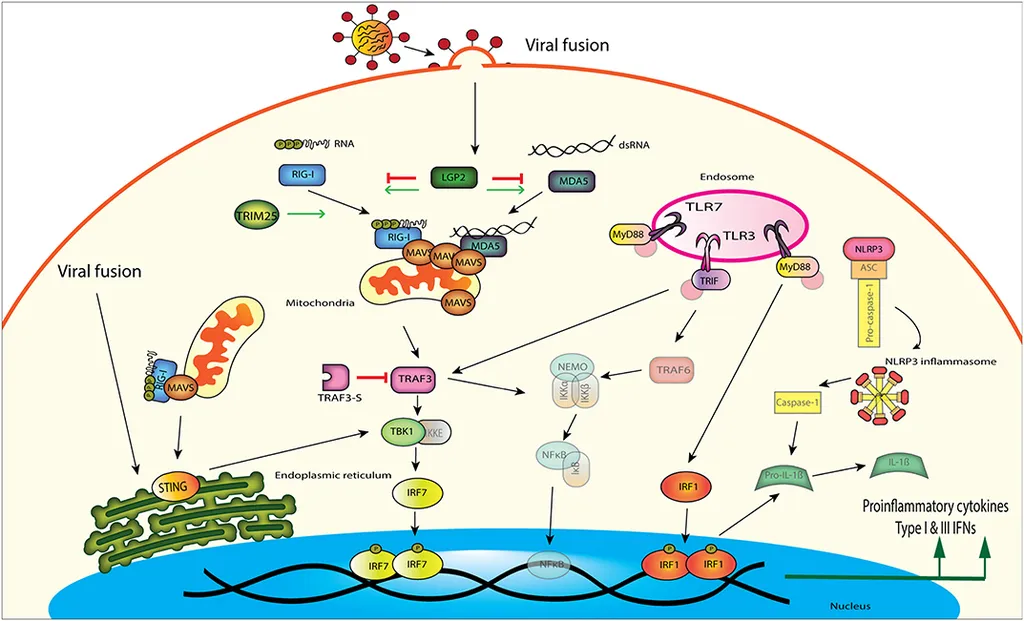In the ever-evolving battle between viruses and host immune systems, a new study has shed light on how the H5N1 avian influenza virus outmaneuvers the duck’s immune defenses. The research, led by Zuxian Chen from the College of Veterinary Medicine at South China Agricultural University, reveals that the polymerase basic 2 (PB2) protein of the H5N1 virus targets a crucial component of the duck’s antiviral response, the mitochondrial antiviral signaling protein (MAVS).
The study, published in the *Journal of Integrative Agriculture* (which translates to *Journal of Comprehensive Agriculture* in English), demonstrates that the H5N1-PB2 protein binds to the transmembrane domain of duck MAVS, effectively disrupting the type I interferon (IFN) signaling pathway. This pathway is the first line of defense against viral infections, and its inhibition allows the virus to evade the host’s immune response.
“We found that the PB2 protein of H5N1 specifically targets the MAVS protein in ducks, which is a key player in the antiviral signaling cascade,” said Chen. “By binding to MAVS, the virus can effectively shut down the type I IFN response, giving it a significant advantage in the infection process.”
The implications of this research are far-reaching, particularly for the poultry industry and the broader agricultural sector. Understanding how the H5N1 virus evades the immune system could lead to the development of more effective vaccines and antiviral treatments, ultimately reducing the impact of avian influenza on poultry farms.
Moreover, the study’s findings could have broader implications for the energy sector, particularly in regions where poultry farming is a significant industry. Avian influenza outbreaks can lead to substantial economic losses, not only due to the direct impact on poultry farms but also due to the disruption of supply chains and the potential for zoonotic transmission. By developing more effective strategies to control and prevent avian influenza, the energy sector can ensure a more stable and reliable supply of poultry products, which are a crucial source of protein and energy for many communities.
“This research provides a deeper understanding of the molecular mechanisms underlying avian influenza infection in ducks,” said Chen. “By targeting the interaction between the PB2 protein and MAVS, we may be able to develop novel therapeutic strategies to combat this devastating virus.”
The study’s findings also highlight the importance of continued research into the molecular mechanisms of viral infection and host immune responses. As the world faces the ongoing threat of emerging and re-emerging infectious diseases, understanding these complex interactions is crucial for developing effective control and prevention strategies.
In the future, this research could pave the way for the development of new vaccines and antiviral treatments that specifically target the interaction between the PB2 protein and MAVS. Additionally, the findings could be used to develop diagnostic tools that can quickly and accurately detect avian influenza infections in poultry, allowing for more rapid and targeted responses to outbreaks.
As the world continues to grapple with the impacts of avian influenza and other infectious diseases, the insights provided by this research offer a glimmer of hope. By unraveling the complex interplay between viruses and host immune systems, scientists can develop more effective strategies to protect both human and animal health, ultimately ensuring a more stable and secure future for all.

